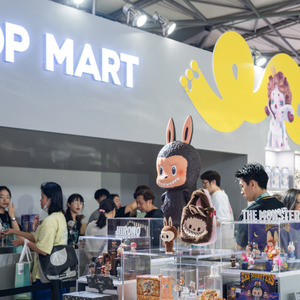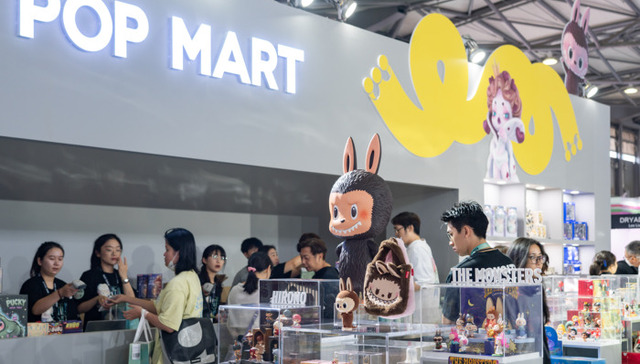by MA Yue, LU Yibei
Chinese lifestyle brands Pop Mart, a designer toy brand known for blind boxes, and Miniso, a lifestyle retailer with playful, affordable designs, are ramping up their efforts to mitigate the impact of rising US tariffs as they continue expanding in North America, a market that has become increasingly vital to their global strategies.
Following a renewed wave of tariff hikes under US President Donald Trump, the cumulative tariff rate on Chinese goods has reached 145% as of April 13. This has heightened uncertainty for Chinese consumer brands with overseas ambitions—especially those still reliant on China-based manufacturing.
Pop Mart and Miniso, which both produce a significant portion of their goods in China, have so far not directly responded to Jiemian News inquiries about specific tariff countermeasures. However, both have outlined broader strategies aimed at reducing exposure to rising costs.
“We were prepared for worse,” said Si De, chief operating officer of Pop Mart, at the company’s March 26 earnings call—prior to the latest rounds of tariff hikes. “Tariffs do have an impact, but not as severe as expected because they are based on total production costs.” Si noted that Pop Mart has already begun shifting production, with its Vietnam facility now accounting for around 10% of total output, and more overseas capacity planned.
In addition to supply chain diversification, the company is also selectively raising product prices in the US. “We won’t raise prices across the board, but some adjustments are likely,” Si said.

Pop Mart’s North American expansion has been rapid. In 2024, revenue from the region reached 720 million yuan (about 99 million dollars), up 556.9% year-on-year and accounting for 14.3% of its overseas earnings. Revenue in the first quarter of 2025 has already matched the total for 2024. Chairman and CEO Wang Ning projects at least 50 stores in the US by 2025, with sales potentially reaching the group’s 2020 global revenue of 2.51 billion yuan.
Miniso has similarly leaned into the US market, which it now calls one of its highest-yielding regions globally. The company added 154 new US stores in 2024, bringing the total to 275 across 47 states. In the year ended March 2024, overseas revenue grew 41.9% to 6.68 billion yuan, accounting for 39.4% of the group’s total income.
Founder and CEO Ye Guofu has said Miniso will focus on group cluster store openings in 24 states that account for 76% of the US population, enhancing logistics efficiency through localized warehousing.
To hedge against tariffs, Miniso has expanded local sourcing in the US, now approaching 40% of procurement, while increasing imports from Southeast Asia, Japan, and South Korea. CFO Zhang Jingjing noted that pricing decisions are made with margin targets in mind and argued that, even with rising costs industry-wide, Miniso’s pricing remains competitive enough to grow market share.
Despite tariffs, the US continues to be a high-margin market. Pop Mart reported a gross profit margin of 71.3% in its overseas markets in 2024, 7.4 percentage points higher than its domestic figure. Miniso, meanwhile, prices some plush toy products three to four times higher in the US than in China, while still maintaining what it describes as good value for American consumers.
But not all sectors are equally resilient. For restaurant brands such as Haidilao, a hotpot chain famed for immersive dining and service, tariff pressure is a bigger threat. With 20 of its 122 international locations in North America, Haidilao’s overseas unit Techsea International returned to profitability in 2024 after years of losses—but supply chain volatility remains a concern.
“Tariffs mostly impact food and beverage exports at the supply chain level,” said Lin Yue, an analyst with Lingyan Management Consulting. “If a restaurant brand depends heavily on ingredients shipped from China, it will face more challenges.”
Haidilao sources fresh produce locally but still imports signature seasonings for standardized processing at regional central kitchens.
While many Chinese F&B brands have localized operations to reduce exposure, Lin cautioned that future outbound expansion will require careful cost-benefit analysis. “Some leading brands may consider building production lines overseas, but the unpredictability of US policy makes such investments risky.”





